Sustainable Mobility as a Service: Supply Analysis and Test Cases
Abstract
:1. Introduction
- in line with objective (1), Section 2 analyses the S-MaaS implications on the four components of supply;
- referring to objective (2), Section 3 focuses on TSM for the simulation of the transport supply subsystem;
- as regards objective (3), Section 4 reports a review of real advanced case studies that are experimenting with MaaS, focusing on their implications for the four components of transport supply; and Section 5 discusses and compares common and uncommon factors among the selected case studies aiming to underline the current limitations and the need to adopt a transport system approach.
2. Transport Supply Components in the MaaS Context
- governance components, including:
- ▪
- ▪
- managerial components, including new services (e.g., sharing mobility), new business models, new actors and their responsibilities, and interaction with citizens; with the support of digital technologies, MaaS integrates conventional and shared mobility services to provide tailored options for transport user needs [6,14,15];
- immaterial components relating to ITS that allow the implementation of MaaS up to the second generation; immaterial components enrich traditional physical transport infrastructures and services to provide optimized travel options that meet user needs [16];
- material components, including physical energy and transport infrastructures that must be adapted to sustainable urban challenges while awaiting the balance between people (social sustainability), the planet (environmental sustainability), and businesses (economic sustainability) [12];
2.1. Governance Components
- Public Authorities (PA) that govern the entire transport system, seeking the equilibrium among all sustainability components (institutional components; Section 2.1.1);
- Companies (CO) that provide transport (MaaS companies) and information (MaaS operator) services, increasing the level of integration (managerial components; Section 2.1.2).
2.1.1. Institutional Components
- the level of government that defines rules or institutions to regulate the transport system (territorial dimension);
- the temporal evolution of possible activities to promote MaaS (temporal dimension);
- the type of support for MaaS implementation, including hard actions, soft actions, and financial supports (support dimension).
2.1.2. Managerial Components
- The mobility services offered by one or more MSPs and their combinations and by considering personal modes (e.g., private cars or bicycles); the MaaS system includes services that can share the vehicle (e.g., car sharing, bike sharing), the ride (e.g., ride-hailing, which includes the driver in the service, and ride-sharing, which does not include the driver), or the parking/charge places;
- The business models adopted for services management; a possible classification depends on the institutional assets of the subject that designs and manages the MaaS system, which can be private or in partnership [23] and can take the following forms:
- ▪
- Public, or top-down, including the government-to-customer form, or G2C;
- ▪
- Private, or bottom-up, including the business-to-consumer form, or B2C;
- ▪
- Public–private partnership, including the business-to-business-to-consumer form, or B2B2C, and the government-to-business-to-consumer form, or G2B2C.
2.2. Immaterial Components
- Data and information for public and private operators and users;
- Booking, ticketing, and validation services that allow users to purchase a package of trips by means of one or more transport modes and pricing policies that can be usage-dependent (pay-as-you-go: PAYG) or independent of usage (account-based ticketing: ABT);
- Bundles that combine traditional and shared mobility services.
2.3. Material Components
2.4. Equipment Component
3. Transport Supply Models to Evaluate Sustainability
3.1. Objectives
- ϕ(●) is the objective function (e.g. total travel times);
- f is the vector of the link user flows;
- y is the vector of decision or control variables for the supply subsystem (e.g. timetables, fares); it can be divided into the supply classes governance, immaterial, equipment, and material.
3.1.1. Economic Sustainability
| c and g | are, respectively, the vectors of generalized link and path costs, combining different components (money, time, energy, etc.); |
| f and h | are, respectively, the vectors of the link and path flows; |
| γ(•) | is the vector of the link–cost flow functions; |
| and | are the vectors of, respectively, nonadditive and additive generalised costs; |
| Δ | is the link path incidence matrix. |
3.1.2. Environmental Sustainability
3.1.3. Social Sustainability
| g | is the vector of path costs for connecting each pair of origin/destination zones; |
| o | is the vector of the indicators of the opportunities in the zone (activities and services); to measure active accessibility, the opportunities in the destination zones are considered, and for measuring passive accessibility, the opportunities in the origin zones are considered; |
| ξ(•) | is the vector of functions measuring accessibility in each zone [42]. |
3.2. Constraints
- behavioural constraints, related to supply–demand interactions, which ensure conservation flows at all network levels (junctions, path level, origin–destination) for all user categories, services, and modes;
- technical constraints, related to the available resources (e.g., financial, vehicle capacity, etc.), which ensure the feasibility of MaaS solutions offered to users;
- external constraints, related to the set of indications and rules on the territorial system, deriving from different levels of government (see Section 2.1.1), which ensure the respect of quantitative parameters or targets concerning different sustainability components (e.g., quantity of pollution for environmental sustainability or number of road accidents for social sustainability).
- the distance from specific targets (e.g., Sustainable Development Goals, SDG targets); for instance, it is possible to measure the Euclidean distance between the sustainability indicators:whered = ∑i [(si − si’)2]0.5
- s is the vector of indicators that measure each sustainability component (economic, social, and environmental) with entry si;
- s’ the vector of indicators that measure each target related to each sustainability component with entry si’;
- the respect of the quantitative parameters defined for each variable representing transport supply (y); for instance, it is possible to measure the respect of an upper level of available resources:wherey ≤ y’
- y is the vector of indicators that measure each variable (e.g., number of available electrical vehicles with respect to seating capacity and battery autonomy);
- y’ is the vector of indicators that measure resources (e.g., 10 vehicles with 15 seats and batteries with 30kwh capacities).
4. A Review of Real Case Studies
4.1. Governance Components
4.1.1. Institutional Components
4.1.2. Managerial Components
- Top-down initiatives, mainly led by public authorities; the most representative is MaaS WienMobil, developed by the public transport operator Wiener Lienen, operating in Vienna [51]; it is an example of a G2C business model; other applications of the G2C business model have been developed in Stockholm, Hannover, Hamburg, Paris, Madrid, and Turin;
- Bottom-up initiatives, mainly led by private organisations the most representative is MaaS Global, born in Helsinki, which is an example of B2C business model that offers its applications (Whim) in different cities [48]; other applications of the B2C business model have been developed in Turku, Brussels, and Amsterdam [52].
4.2. Immaterial Components
4.3. Material Components
4.4. Equipment Components
4.5. Transport Supply Models for a Case Study
- The governance component, with the introduction of:
- A new institution (Strait Authority) that regulates and plans the transport system in the area (PA);
- A new MaaS operator that integrates conventional and advanced mobility services, adopting a digital platform where data and information about passenger mobility converge (CO);
- The immaterial component, which integrates a set of monitoring technologies (ICT tools) and TSM inside an ITS platform that, on one side, supports the governance components (PA and CO) and, on the other, provides information, booking, and ticketing function for passenger mobility;
- The material component, which includes existing and planned physical maritime and terrestrial transport nodes and links (e.g., new berths, a new terrestrial transit system);
- The equipment component, which includes the existing and planned means of terrestrial transport means for providing conventional and sharing mobility services.
- Total distances travelled by all users, equal to about 10,000,000 km/day;
- Total times spent by all users on extra-urban trips, about 209,000 h/days;
- The expected values of travel times are 45 min by car and 78 min by public transport.
5. Discussion and Final Remarks
5.1. Discussion
5.2. Final Remarks
- the governance component, with analyses on the possibilities of MaaS to find a balance between societal goals, promoted by public administrations, and technical constraints, imposed on private and public companies;
- the immaterial components, with studies and real experiments to enhance exchanges between ICT and TSMs inside ITSs to improve the modelling capability of MaaS implications for transport systems in order to increase sustainable mobility;
- the material components, focusing on the MaaS implications for transport infrastructures and on the possibility of enhancing physical integrations between the different modes;
- the components of the equipment, to better understand the mutual interactions between MaaS and CAEV evolution;
- the implementation of the TSM framework in a real case study.
Funding
Institutional Review Board Statement
Data Availability Statement
Acknowledgments
Conflicts of Interest
References
- UN. United Nation. Sustainable Development Goals. Available online: https://sdgs.un.org/ (accessed on 13 June 2022).
- European Innovation Partnership on Smart Cities and Communities (EIP-SCC). The Marketplace of the European Innovation Partnership on Smart Cities and Communities (EIP-SCC). How the Marketplace Team Can Help You Launch Smart City Solutions. Available online: https://smart-cities-marketplace.ec.europa.eu/sites/default/files/EIP_Brochure.pdf (accessed on 13 June 2022).
- Šulyová, D.; Vodák, J.; Koman, G. Implementation Smart City Concepts for Mobility, Case Study of World Logistic Models on the Smart Principles. LOGI–Sci. J. Transp. Logist. 2020, 11, 110–119. [Google Scholar] [CrossRef]
- Tcholtchev, N.; Schieferdecker, I. Sustainable and reliable information and communication technology for resilient smart cities. Smart Cities 2021, 4, 156–176. [Google Scholar] [CrossRef]
- Kamargianni, M.; Matyas, M.; Li, W.; Muscat, J.; Yfantis, L. The MaaS Dictionary. MaaSLab, Energy Institute, University College London. Available online: www.maaslab.org (accessed on 13 June 2022).
- Pangbourne, K.; Mladenović, M.N.; Stead, D.; Milakis, D. Questioning mobility as a service: Unanticipated implications for society and governance. Transp. Res. Part A Policy Pract. 2020, 131, 35–49. [Google Scholar] [CrossRef]
- Musolino, G.; Rindone, C.; Vitetta, A. Models for Supporting Mobility as a Service (MaaS) Design. Smart Cities 2022, 5, 206–222. [Google Scholar] [CrossRef]
- Battaglia, G.; Musolino, G.; Vitetta, A. Freight Demand Distribution in a Suburban Area: Calibration of an Acquisition Model with Floating Car Data. J. Adv. Transp. 2022, 2022, 1535090. [Google Scholar] [CrossRef]
- Smith, G.; Hensher, D.A. Towards a framework for mobility-as-a-service policies. Transp. Policy 2020, 89, 54–65. [Google Scholar] [CrossRef] [Green Version]
- Vitetta, A. Sustainable Mobility as a Service: Framework and transport system models. Information 2022, 13, 346. [Google Scholar] [CrossRef]
- Butler, L.; Yigitcanlar, T.; Paz, A. Barriers and risks of mobility-as-a-service (MaaS) adoption in cities: A systematic review of the literature. Cities 2021, 109, 103036. [Google Scholar] [CrossRef]
- Russo, F. Sustainable Mobility as a Service: Dynamic models for Agenda 2030 policies. Information 2022. under review. [Google Scholar]
- UN. United Nation. Transport Trends and Economics 2018–2019. Mobility as a Service. Mobility as a Service. ISBN: 978-92-1-117238-6. Available online: https://unece.org/DAM/trans/main/wp5/publications/Mobility_as_a_Service_Transport_Trends_and_Economics_2018-2019.pdf (accessed on 13 June 2022).
- Ho, C.Q.; Hensher, D.A.; Reck, D.J. Drivers of participant’s choices of monthly mobility bundles: Key behavioural findings from the Sydney mobility as a service (MaaS) trial. Transp. Res. Part C Emerg. Technol. 2021, 124, 102932. [Google Scholar] [CrossRef]
- Musolino, G. Sustainable Mobility as a Service: Demand analysis and case studies. Information 2022. under review. [Google Scholar]
- Vitetta, A. Sentiment analysis models with bayesian approach: A bike preference application in metropolitan cities. J. Adv. Transp. 2022, 2022, 2499282. [Google Scholar] [CrossRef]
- Mouftah, H.T.; Erol-Kantarci, M.; Sorour, S. (Eds.) Connected and Autonomous Vehicles in Smart Cities; CRC Press: Boca Raton, FL, USA, 2020. [Google Scholar]
- Croce, A.I.; Musolino, G.; Rindone, C.; Vitetta, A. Traffic and energy consumption modelling of electric vehicles: Parameter updating from floating and probe vehicle data. Energies 2021, 15, 82. [Google Scholar] [CrossRef]
- Wong, Y.Z.; Hensher, D.A.; Mulley, C. Mobility as a service (MaaS): Charting a future context. Transp. Res. Part A Policy Pract. 2020, 131, 5–19. [Google Scholar] [CrossRef]
- Meng, L.; Somenahalli, S.; Berry, S. Policy implementation of multi-modal (shared) mobility: Review of a supply-demand value proposition canvas. Transp. Rev. 2020, 40, 670–684. [Google Scholar] [CrossRef]
- TNO. The Netherlands Organisation for Applied Scientific Research. Policy Options to Steer Mobility as a Service: International Case Studies. Available online: https://www.tno.nl/en/about-tno/news/2021/1/governance-models-mobility-as-a-service-maas/ (accessed on 13 June 2022).
- Hut, Å.; Perjo, L.; Smith, G. Shared mobility in rural contexts: Organizational insights from five mobility-as-a-service pilots in sweden. Sustainability 2021, 13, 10341. [Google Scholar]
- Calderón, F.; Miller, E.J. A conceptual framework for modeling the supply side of mobility services within large-scale agent-based travel demand models. Transp. Lett. 2021, 14, 600–609. [Google Scholar] [CrossRef]
- Nuzzolo, A.; Comi, A. A Subjective Optimal Strategy for Transit Simulation Models. J. Adv. Transp. 2018, 2018, 8797328. [Google Scholar] [CrossRef]
- Aditjandra, P. Review of international journey planning system to welcoming MaaS. Adv. Transp. Policy Plan. 2019, 3, 29–47. [Google Scholar]
- Bubelíny, O.; Ďaďová, I.; Kubina, M.; Soviar, J. The Use of Smart Elements for the Transport Operation in the Slovak Cities. LOGI–Sci. J. Transp. Logist. 2019, 10, 51–60. [Google Scholar] [CrossRef] [Green Version]
- Cirianni, F.; Monterosso, C.; Panuccio, P.; Rindone, C. A Review Methodology of Sustainable Urban Mobility Plans: Objectives and Actions to Promote Cycling and Pedestrian Mobility. In International Conference on Smart and Sustainable Planning for Cities and Regions; Springer: Cham, Switzerland, 2018. [Google Scholar]
- Russo, F.; Rindone, C.; Panuccio, P. European plans for the smart city: From theories and rules to logistics test case. Eur. Plan. Stud. 2016, 24, 1709–1726. [Google Scholar] [CrossRef]
- Panuccio, P. Sustainable Mobility as a Service: Smart city and planning. Information 2022. under review. [Google Scholar]
- Van Audenhove, F.-J.; Rominger, G.; Arby, H.; Tauvel, M. How to Realize the Promise of Mobility-As-A-Service. Arthur D. Little’s Future of Mobility Lab. Available online: https://www.adlittle.com/sites/default/files/reports/ADL_Beyond_MaaS_Report_0.pdf (accessed on 13 June 2022).
- Corwin, S.; Jameson, N.; Pankratz, D.M.; Willigmann, P. The Future of Mobility: What’s Next. Tomorrow’s Mobility Ecosystem—And How to Succeed in it; Deloitte: New York, NY, USA, 2016. [Google Scholar]
- Panuccio, P. Smart Planning: From City to Territorial System. Sustainability 2019, 11, 7184. [Google Scholar] [CrossRef] [Green Version]
- Comi, A.; Valentini, A.; Sassano, M. Monitoring and controlling real-time bus services: A reinforcement learning procedure for eliminating bus bunching. Transp. Res. Procedia 2022, 62, 302–309. [Google Scholar] [CrossRef]
- Nuzzolo, A.; Comi, A.; Polimeni, A. Exploring on-demand service use in large urban areas: The case of Rome. Arch. Transp. 2019, 50, 77–90. [Google Scholar] [CrossRef]
- Croce, A.I.; Musolino, G.; Rindone, C.; Vitetta, A. Energy consumption of electric vehicles: Models’ estimation using big data (FCD). Transp. Res. Procedia 2020, 47, 211–218. [Google Scholar] [CrossRef]
- Russo, F.; Musolino, G. A unifying modelling framework to simulate the Spatial Economic Transport Interaction process at urban and national scales. J. Transp. Geogr. 2012, 24, 189–197. [Google Scholar] [CrossRef]
- Nuzzolo, A.; Russo, F.; Crisalli, U. A doubly dynamic schedule-based assignment model for transit networks. Transp. Sci. 2001, 35, 268–285. [Google Scholar] [CrossRef]
- Nuzzolo, A.; Comi, A. Dynamic Optimal Travel Strategies in Intelligent Stochastic Transit Networks. Information 2021, 12, 281. [Google Scholar] [CrossRef]
- Comi, A.; Rossolov, A.; Polimeni, A.; Nuzzolo, A. Private car O-D flow estimation based on automated vehicle monitoring data: Theoretical issues and empirical evidence. Information 2021, 12, 493. [Google Scholar] [CrossRef]
- Comi, A.; Nuzzolo, A.; Brinchi, S.; Verghini, R. Bus travel time variability: Some experimental evidences. Transp. Res. Procedia 2017, 27, 101–108. [Google Scholar] [CrossRef]
- Comi, A.; Polimeni, A. Bus Travel Time: Experimental Evidence and Forecasting. Forecasting 2020, 2, 309–322. [Google Scholar] [CrossRef]
- Cascetta, E. Transportation Systems Engineering: Theory and Methods; Springer Science & Business Media: Berlin, Germany, 2013; p. 49. [Google Scholar]
- Stopka, O.; Šimková, I.; Konečný, V. The quality of service in the public transport and shipping industry. NAŠE MORE Znan. Časopis More Pomor. 2015, 62, 126–130. [Google Scholar] [CrossRef]
- Russo, F.; Chilà, G. A sequential dynamic choice model to simulate demand in evacuation conditions. WIT Trans. Inf. Commun. Technol. 2010, 43 Pt I, 431–442. [Google Scholar]
- Di Gangi, M.; Vitetta, A. Quantum utility and random utility model for path choice modelling: Specification and aggregate calibration from traffic counts. J. Choice Model. 2021, 40, 100290. [Google Scholar] [CrossRef]
- Cerema. MaaS in Europe: Lessons from the Helsinki, Vienna and Hanover Experiments. Available online: https://www.cerema.fr/system/files/documents/2020/04/cerema_parangonnage_maas_synthesis_eng.pdf (accessed on 13 June 2022).
- City of Helsinki. Helsinki Intelligent Transport System Development Programme 2030. Developing Traffic Information, New Mobility Services and Automation. Available online: https://www.hel.fi/static/liitteet/kaupunkiymparisto/julkaisut/julkaisut/julkaisu-16-19-en.pdf (accessed on 13 June 2022).
- MaaS Global. MaaS Global and Wim App. Available online: https://whimapp.com/about-us/ (accessed on 13 June 2022).
- Wiener Linien. WienMobil—The App for All Routes in Vienna. Available online: https://www.wienerlinien.at/web/wl-en/wienmobil-app (accessed on 13 June 2022).
- Piemonte Region. BIP for MaaS. Available online: https://www.bipformaas.it/en/manifesto-en/ (accessed on 13 June 2022).
- Audouin, M.; Finger, M. Empower or thwart? Insights from Vienna and Helsinki regarding the role of public authorities in the development of MaaS schemes. Transp. Res. Procedia 2019, 41, 6–16. [Google Scholar] [CrossRef]
- Zijlstra, T.; Durand, A.; Hoogendoorn-Lanser, S.; Harms, L. Early adopters of mobility-as-a-service in the Netherlands. Transp. Policy 2020, 97, 197–209. [Google Scholar] [CrossRef]
- Cirianni, F.; Leonardi, G.; Iannò, D. Operating and integration of services in local public transport. In Smart Innovation, Systems and Technologies, Volume 178 SIST, Proceedings of the 4th International Symposium on New Metropolitan Perspectives, NMP 2020, Reggio Calabria, Italy, 26 May 2020; Springer: Cham, Switzerland, 2021; pp. 1523–1531. [Google Scholar]
- Nuzzolo, A.; Persia, L.; Comi, A.; Polimeni, A. Shared Autonomous Electrical Vehicles and Urban Mobility: A Vision for Rome in 2035. In: Nathanail, E., Karakikes, I. (Eds.) Data Analytics: Paving the Way to Sustainable Urban Mobility. CSUM 2018. Adv. Intell. Syst. Comput. 2019, 879, 772–779. [Google Scholar]
- Barrow, K. Mobility as a Service-the End of the Road for Urban Car Ownership? International Railway Journal. Available online: https://www.railjournal.com/in_depth/mobility-as-a-service-the-end-of-the-road-for-urban-car-ownership/ (accessed on 13 June 2022).
- Helsinki Region Transport (HSL). Digitransit Platform. Available online: https://digitransit.fi/en/ (accessed on 4 July 2022).
- Fenton, P.; Chimenti, G.; Kanda, W. The role of local government in governance and diffusion of mobility-as-a-service: Exploring the views of MaaS stakeholders in Stockholm. J. Environ. Plan. Manag. 2020, 63, 2554–2576. [Google Scholar] [CrossRef]
- Arias-Molinares, D.; Carlos García-Palomares, J. Shared mobility development as key for prompting mobility as a service (MaaS) in urban areas: The case of Madrid. Case Stud. Transp. Policy 2020, 8, 846–859. [Google Scholar] [CrossRef]
- UITP–International Association of Public Transport. Mobility as A Service. Available online: https://cms.uitp.org/wp/wp-content/uploads/2020/07/Report_MaaS_final.pdf (accessed on 13 June 2022).
- Shaheen, S.; Cohen, A.; Farrar, E. Carsharing’s impact and future. Adv. Transp. Policy Plan. 2019, 4, 87–120. [Google Scholar]
- Sarasini, S.; Diener, D.; Sochor, J.; Vanacore, E. Stimulating a Transition to Sustainable Urban Mobility. JPI Urban Europe Programming in the Field of Mobility as a Service. Available online: https://jpi-urbaneurope.eu/wp-content/uploads/2018/09/JPI-UE_MaaS_white_paper2018.pdf (accessed on 13 June 2022).
- Nikitas, A.; Michalakopoulou, K.; Njoya, E.T.; Karampatzakis, D. Artificial intelligence, transport and the smart city: Definitions and dimensions of a new mobility era. Sustainability 2020, 12, 2789. [Google Scholar] [CrossRef] [Green Version]
- Birgillito, G.; Rindone, C.; Vitetta, A. Passenger Mobility in a Discontinuous Space: Modelling Access/Egress to Maritime Barrier in a Case Study. J. Adv. Transp. 2018, 2018, 6518329. [Google Scholar] [CrossRef]
- Vitetta, A.; Rindone, C.; Musolino, G.; Vitale, A. Indagine pilota su scenari Mobility as a Service (MaaS) nello stretto di Messina. Laborest 2022, 24, 50–56. [Google Scholar] [CrossRef]
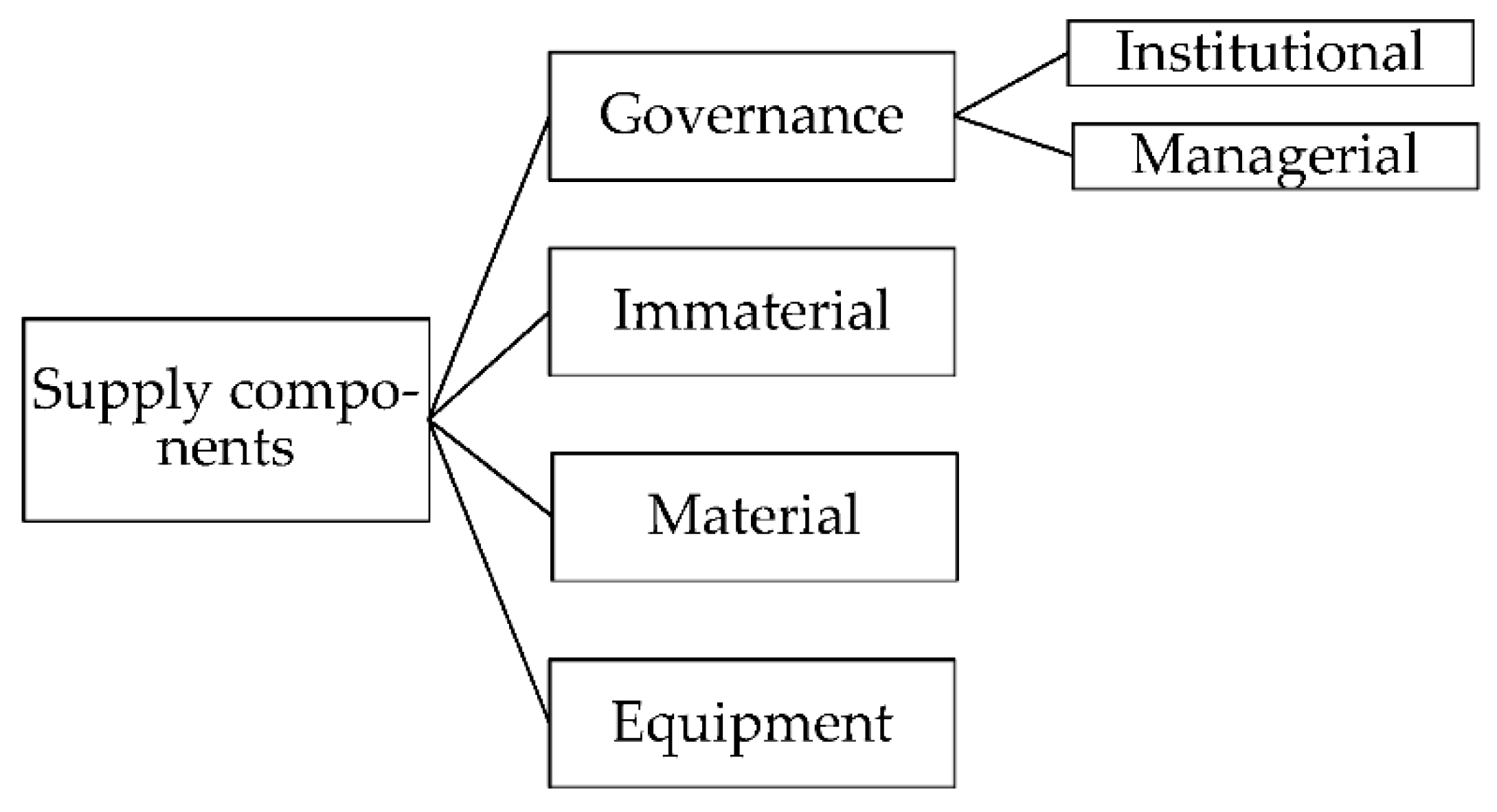
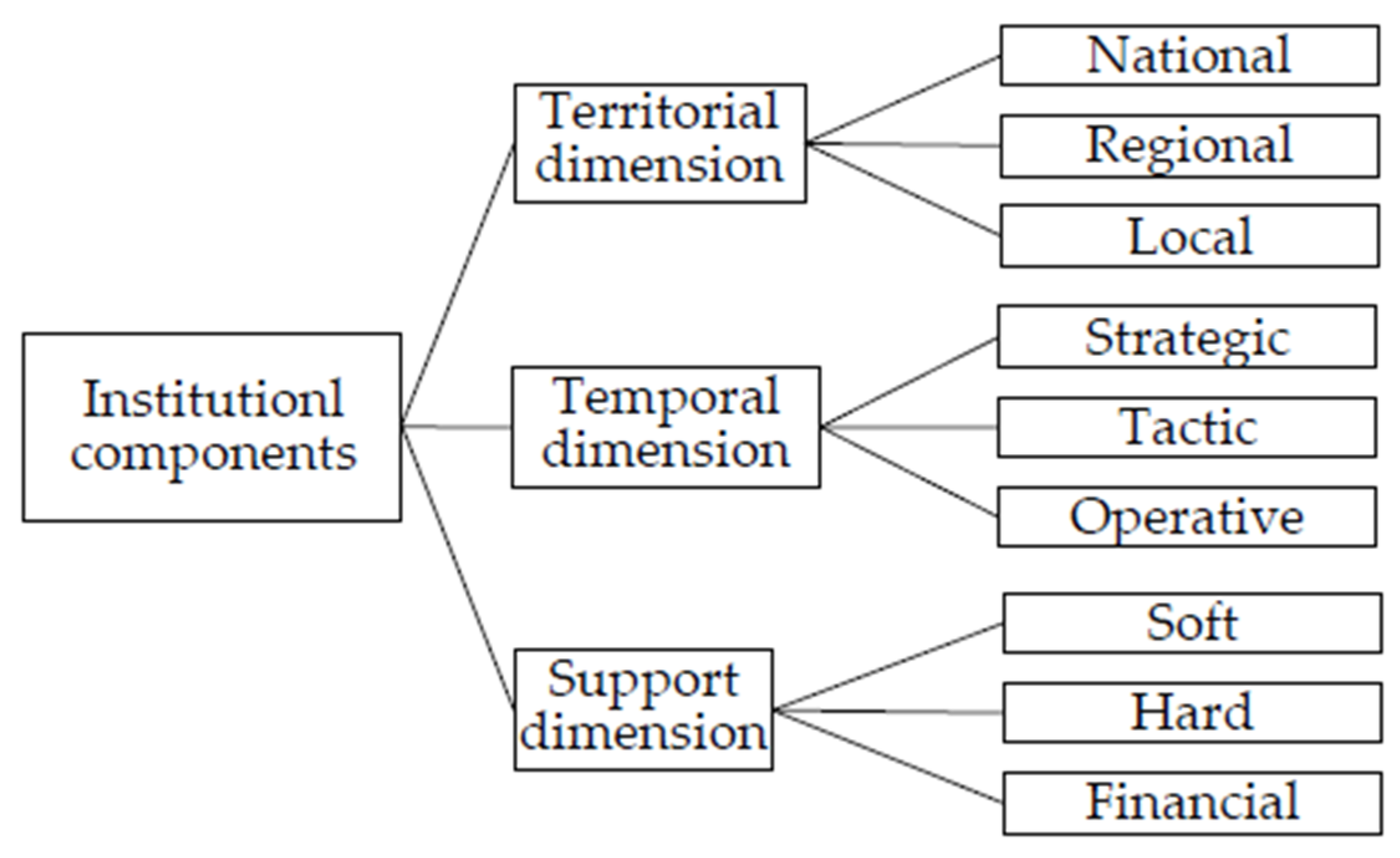
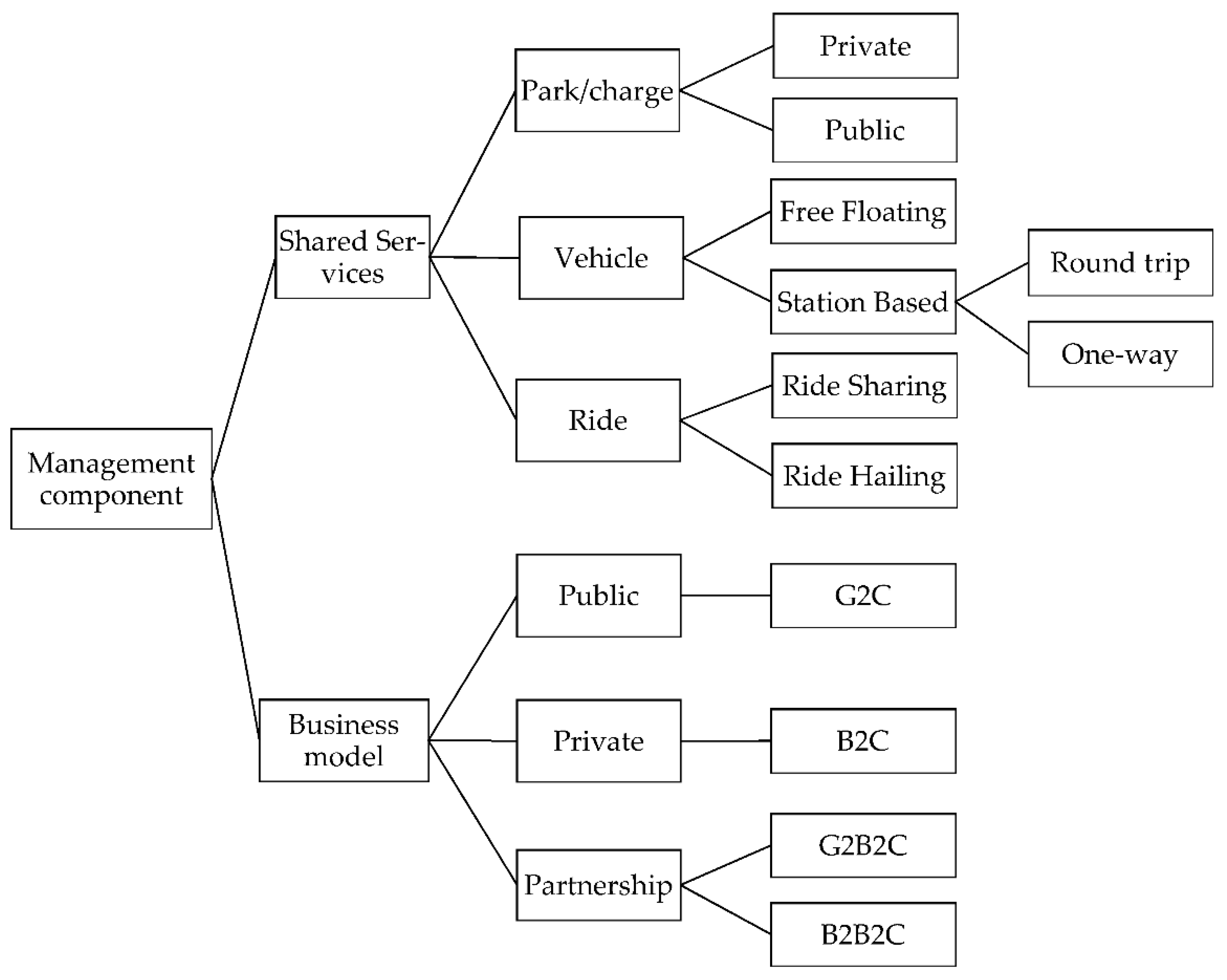
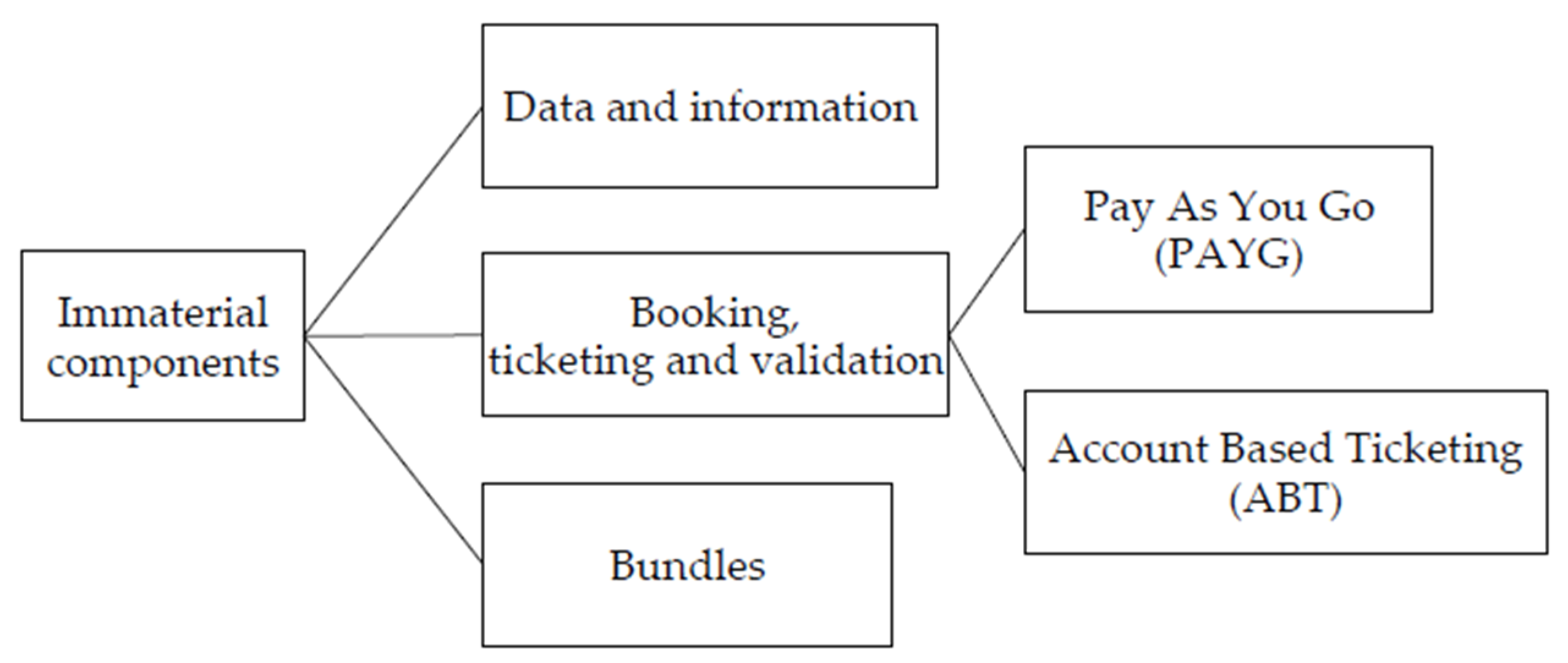

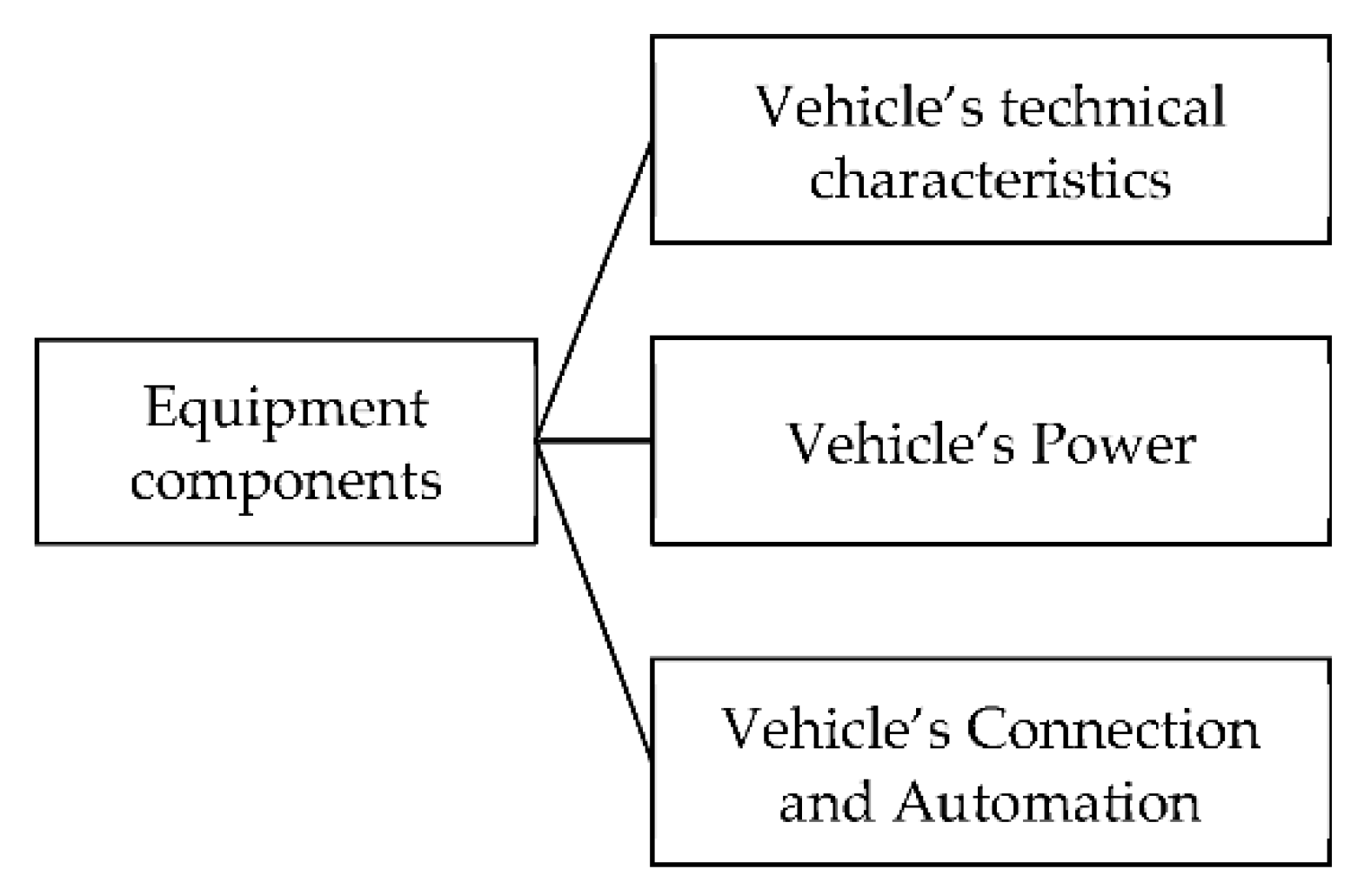
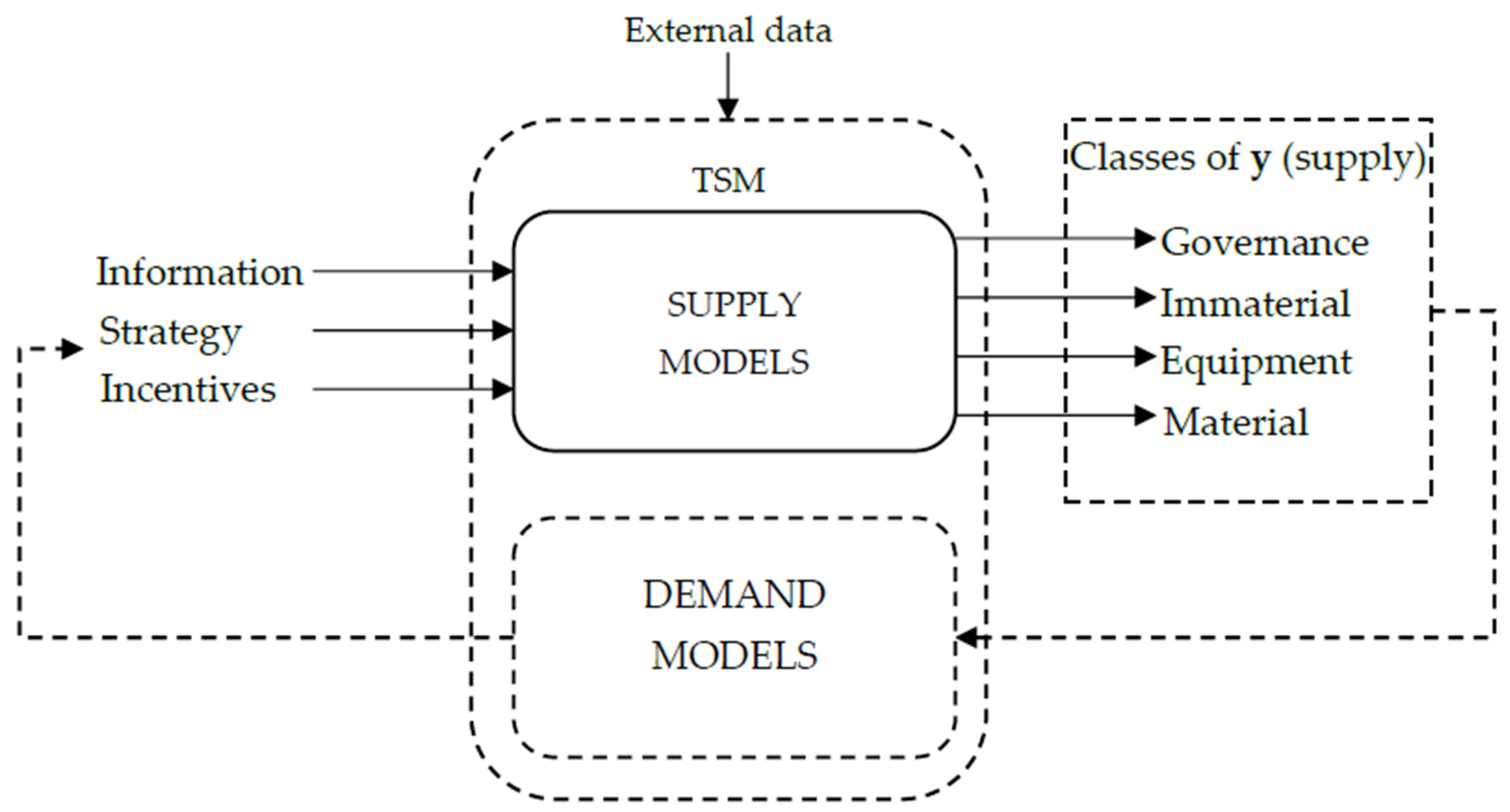
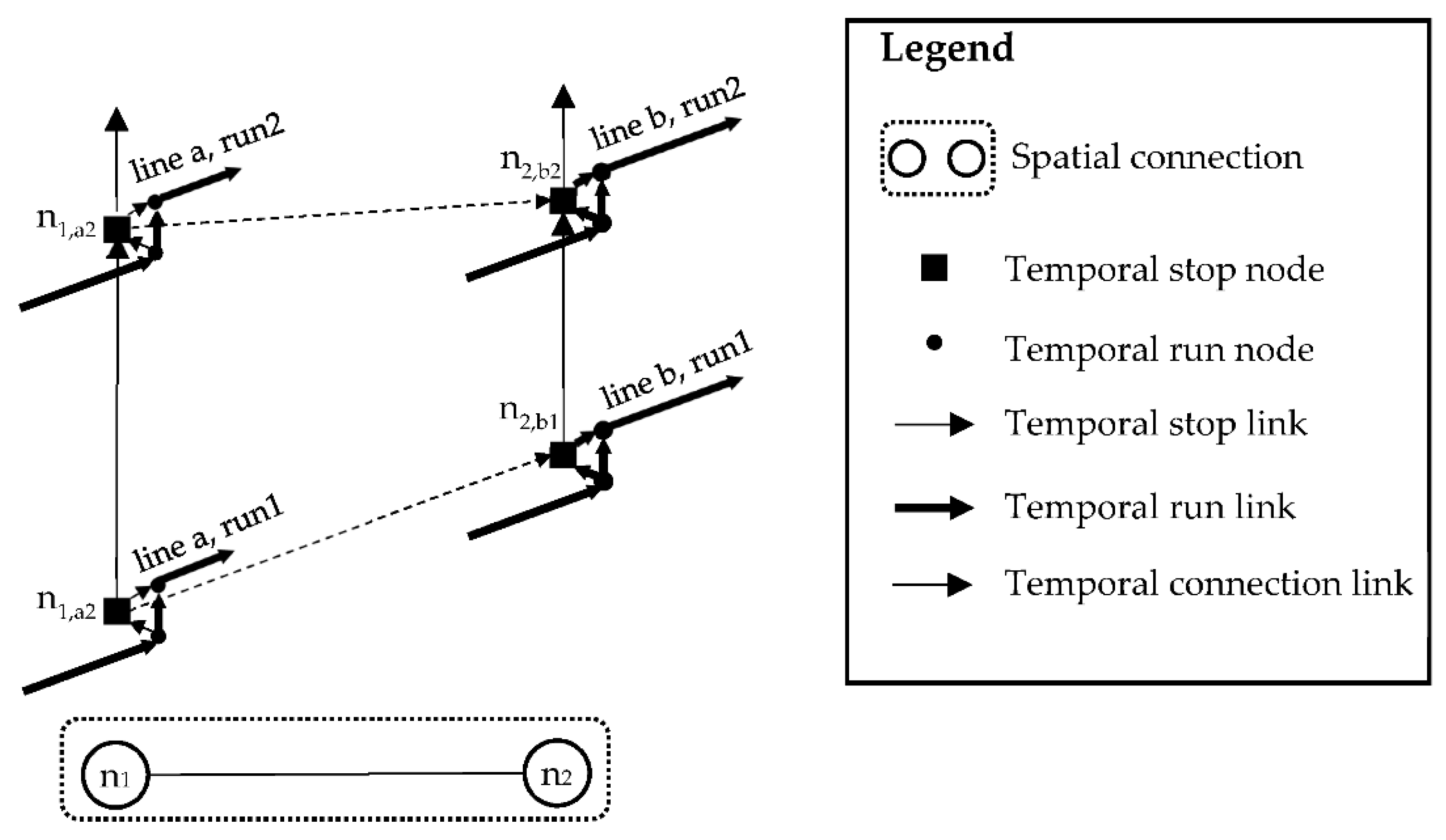
| City | Helsinki | Turku | Vienna | Brussels | Stockholm | |
| Platform | WhimApp | WhimApp | WhimApp | WhimApp | UbiGo | |
| public transport | regional | unlimited/month | unlimited/month | minutes/years | unlimited/month | |
| urban | unlimited/month | unlimited/month | unlimited/day | minutes/years | unlimited/month | |
| vehicle | car sharing | discount/month | discount/month | - | PAYG | PAYG |
| bike sharing | minutes/day | minutes/day | - | minutes/day | one hour/day | |
| e-scooter sharing | minutes/month | minutes/month | minutes/day | minutes/day | - | |
| rides | public taxi | discount/month | discount/month | PAYG | PAYG | - |
| Scenario | GOVERNANCE | IMMATERIAL (CO) | MATERIAL (PA, CO) | EQUIPMENT (PA, CO) | |
|---|---|---|---|---|---|
| Institutional (PA) | Managerial (CO) | ||||
| Current (without MaaS) | 3 institutions | 3 transport operators | single websites | 4 ports | Single fleets |
| Planned (without MaaS) | 1 MaaS planner | 1 MaaS operator | 1 MaaS platform | 2 interchange nodes | Shared fleets |
| Country | City | GOVERNANCE | IMMATERIAL (CO) | MATERIAL (PA, CO) | EQUIPMENT (PA, CO) | TSM (PA, CO) | |
|---|---|---|---|---|---|---|---|
| Institutional (PA) | Managerial (CO) | ||||||
| Finland | Helsinki | *** | ** | *** | ** | ** | *** |
| Finland | Turku | ** | *** | *** | - | * | *** |
| Austria | Wien | ** | ** | *** | - | ** | *** |
| Scandinavia | Stockholm | * | ** | * | ** | * | ** |
| Germany | Hannover | * | *** | ** | - | * | * |
| Germany | Hamburg | * | ** | ** | ** | * | * |
| France | Paris | * | ** | ** | - | * | * |
| Belgium | Brussels | * | ** | ** | - | * | * |
| Netherlands | Amsterdam | ** | *** | ** | - | * | ** |
| Spain | Madrid | * | ** | ** | ** | ** | * |
| Italy | Turin | * | * | * | - | * | * |
| Italy | Strait of Messina | * | - | - | * | - | ** |
Publisher’s Note: MDPI stays neutral with regard to jurisdictional claims in published maps and institutional affiliations. |
© 2022 by the author. Licensee MDPI, Basel, Switzerland. This article is an open access article distributed under the terms and conditions of the Creative Commons Attribution (CC BY) license (https://creativecommons.org/licenses/by/4.0/).
Share and Cite
Rindone, C. Sustainable Mobility as a Service: Supply Analysis and Test Cases. Information 2022, 13, 351. https://doi.org/10.3390/info13070351
Rindone C. Sustainable Mobility as a Service: Supply Analysis and Test Cases. Information. 2022; 13(7):351. https://doi.org/10.3390/info13070351
Chicago/Turabian StyleRindone, Corrado. 2022. "Sustainable Mobility as a Service: Supply Analysis and Test Cases" Information 13, no. 7: 351. https://doi.org/10.3390/info13070351
APA StyleRindone, C. (2022). Sustainable Mobility as a Service: Supply Analysis and Test Cases. Information, 13(7), 351. https://doi.org/10.3390/info13070351






